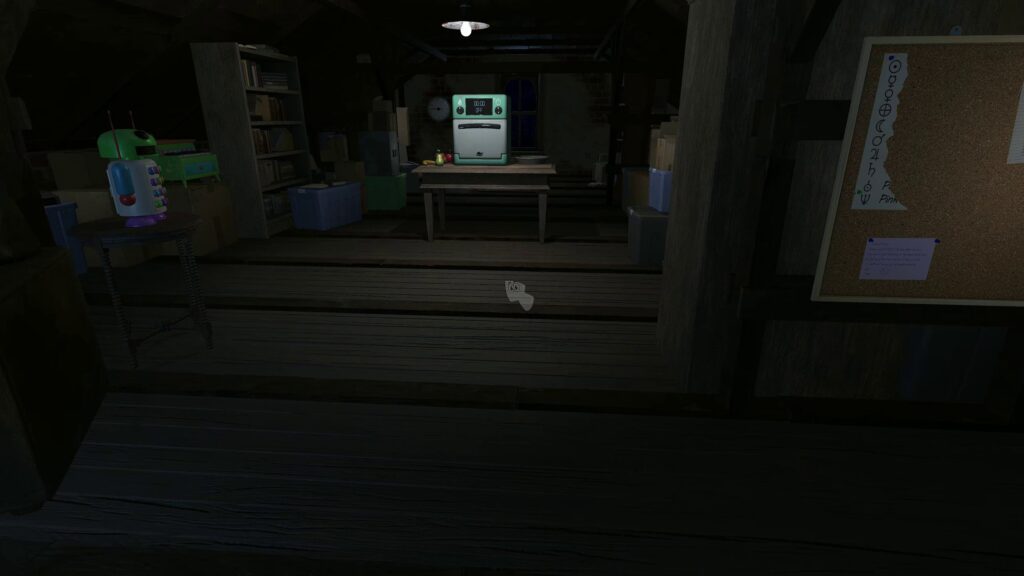Amanda the Adventurer might seem like just another VHS-styled indie horror game on the surface, but beneath its retro graphics and short playtime lies one of the most tightly designed psychological horror experiences in recent years. What sets the game apart is not just its creepy aesthetics or unsettling atmosphere — it’s the central theme of forced obedience and how that mechanic ties into real-world fears of surveillance, loss of autonomy, and media manipulation. This article dives deep into that core theme, exploring how Amanda the Adventurer uses player interaction, narrative design, and psychological tension to explore the horrifying consequences of being forced to comply.
The Illusion of Choice: Setting the Stage
At the start of Amanda the Adventurer, the player is introduced to what appears to be a simple, nostalgic children’s game. The setting is familiar: an old attic filled with dusty objects and a television ready to play a series of VHS tapes. The tapes feature Amanda, a cheerful cartoon girl, and Wooly, a nervous sheep, teaching the viewer educational lessons.

At first glance, the game mimics the structure of shows like Dora the Explorer, giving players simple prompts: “What do we use to cut the apple?” or “Where’s the store?” The player is expected to type in the correct response. But very early on, things begin to unravel. The game presents you with multiple choices — but rewards only one, punishing deviation.
This illusion of interactivity mirrors the real-world phenomenon of “pseudo-choice” in controlled environments, such as state propaganda, corporate advertising, and even authoritarian education systems. The message is clear: you can make any choice, as long as it’s the right one.
Amanda’s Personality Shift and the Loss of Agency
Amanda begins as an energetic and friendly character, speaking directly to the player. But the more the player disobeys her prompts, the more hostile she becomes. Refuse to say the word she wants, and she’ll force the response anyway. Type something unexpected, and the game corrects you with an eerie animation and flat affect.

Amanda as Authority
She isn’t just a character — she’s a metaphor for authoritarian control. Her cheerful demeanor masks a demand for obedience. She punishes dissent. She overrides resistance.
Wooly as the Subjugated
In contrast, Wooly serves as the audience’s surrogate. He is visibly uncomfortable, warning the player not to say certain things or answer Amanda’s questions. His eventual silencing is both literal and symbolic — a representation of what happens to those who resist within repressive systems.
This moment reveals the game’s core horror: not just being in a dangerous world, but being in a world where your actions are controlled, judged, and reshaped without consent.

Input Denied: When the Game Ignores You
One of the most psychologically effective mechanics in Amanda the Adventurer is how it pretends to ask for input — only to reject it.
Psychological Impact of Invalidated Input
There’s a difference between being wrong and being silenced. The game doesn’t merely correct you when you provide the “wrong” answer — it overrides your input, replacing it with what Amanda wants. This repetition becomes chilling.

List of Examples
-
Type “knife,” Amanda smiles.
-
Type “scissors,” she frowns and types “knife” for you.
-
Say “Wooly” when asked who should help — she chooses herself.
-
Type “no” to avoid entering the store — she forces you in anyway.
This mechanical design simulates real-life manipulation and coercion, especially as seen in abusive relationships or controlled social environments. The horror is not in being wrong — it’s in being overridden.
Environmental Reinforcement: The Oppressive Attic
The entire game takes place in a single attic, a confined space filled with clues, puzzles, and visual storytelling. This location plays a key role in reinforcing the theme of psychological control.
Surveillance and Observation
The attic contains a television and a stack of VHS tapes — clearly left for the player. But by whom? Who is watching? The camera-like position of the TV and static on the screen make it feel as if the player is being observed at all times.
Spatial Confinement
There are no windows in the attic. You can’t leave. The only interaction is with the tapes, the safe, and the locked drawers. This creates a sense of claustrophobia — a lack of escape — which mirrors the psychological experience of being trapped in a system where you can only obey.

Punishment for Dissent: Fear Through Compliance
As Amanda becomes more aggressive, the game introduces real consequences for “incorrect” choices. Wooly suffers. The environment distorts. Amanda glares at you.
Pavlovian Conditioning
Players are quickly trained to give Amanda what she wants. The punishment of deviation isn’t death — it’s discomfort. The music becomes eerie, the screen glitches, and Amanda’s voice changes. This form of negative reinforcement conditions players into obedience.
Real-World Parallels
This mechanic reflects how people are often conditioned to comply in the real world through emotional or psychological coercion. Social pressure, shame, and fear are more powerful than direct threats — and Amanda uses all of them.

The Role of Wooly: A Voice of Resistance
Throughout the game, Wooly serves as the only character who actively resists Amanda. He’s nervous, afraid, and repeatedly tries to warn the player — but is eventually silenced.
Wooly as the Victim
Wooly’s fate is determined by your actions. Disobey Amanda, and he suffers. Obey her, and he disappears. His arc is tragic because it reinforces how resistance is often punished first.
Wooly as a Reflection
He represents the player’s conscience. Every time Amanda punishes him, it’s a direct result of your willingness to go along. This creates a disturbing moral dilemma: obey Amanda and survive, or disobey and cause harm.
Cyclical Control: Multiple Endings and Repetition
Amanda the Adventurer offers several endings — but many feel cyclical or incomplete. No matter how much you resist, the tapes start over. Amanda returns. The attic remains locked.
The Loop as Metaphor
This suggests the deeper horror of the game: you cannot escape. The only choices you’re given are illusions, and all lead back to the same origin point. This design evokes the feeling of being trapped in a feedback loop of control.
ARG Layers
Even the multiple endings, while different on the surface, reinforce the theme of no true freedom. This is an intentional narrative choice that plays into horror genre traditions, especially those dealing with trauma and inescapable control.
Amanda as a Symbol of Corrupted Media
The most striking part of Amanda the Adventurer is how it subverts children’s media. Amanda isn’t just a villain — she’s a twisted form of something once safe and trustworthy.
Weaponizing Nostalgia
By using VHS tapes, kid-show aesthetics, and pastel environments, the game turns comfort into discomfort. It preys on nostalgia, transforming it into a weapon.
Media as Indoctrination
Amanda represents how media — especially targeted toward children — can be used to instill values, create conformity, or even program behavior. Her lessons aren’t just about apples or stores. They’re about control.
Fan Reactions and Theories: Obedience Beyond the Game
The community around Amanda the Adventurer has exploded with theories, discussions, and lore analyses. Most revolve around Amanda’s origins, the tapes’ purpose, and who the player really is.
Collective Lore Building
Fans have speculated Amanda is an AI experiment, a spirit, or even a child abused and transformed into a vessel for obedience. The lack of clarity allows for deep engagement.
Game as Commentary
Many players interpret the game as a commentary on the modern educational system, media indoctrination, or even parental control structures. It becomes not just a horror game, but a societal critique.
Conclusion: The Real Horror of Amanda the Adventurer
Amanda the Adventurer is terrifying not because of gore or monsters, but because of what it forces us to confront: the loss of agency, the trauma of control, and the horror of being conditioned to obey. Every mechanic — from restricted input to character manipulation — reinforces this theme.
It’s a game that tricks you into feeling like you’re in charge, only to pull the rug out from under you. And in doing so, it mirrors the very systems that manipulate us in real life — education, media, technology — asking the most chilling question of all: Are you still choosing, or have you been programmed to comply?


